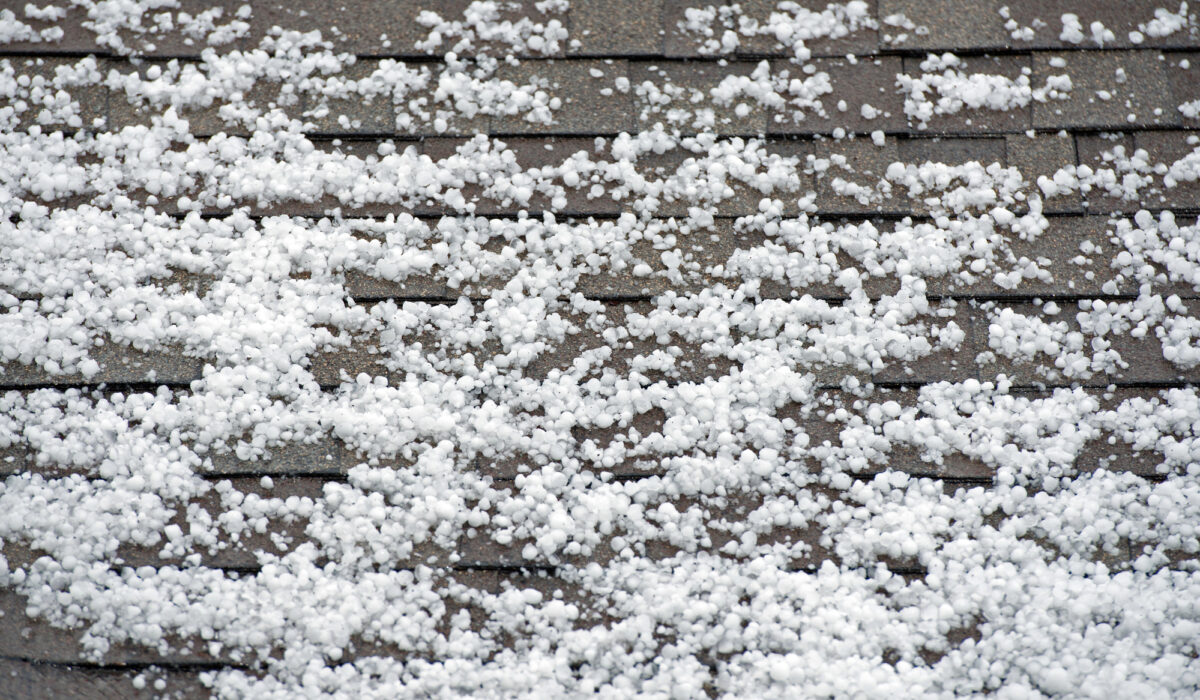The Impact of Hail Storms on Your Roof: Understanding the Risks and Solutions
Hail storms are a natural occurrence that can have a profound effect on the integrity and longevity of your roof. From small dents to major structural damage, hail can compromise the effectiveness of your roof’s protective barrier, leading to leaks, water damage, and costly repairs if left unaddressed. In this blog, we’ll explore the ways in which hail storms affect the life of your roof and what you can do to minimize the damage.
1. Physical Damage to Roofing Materials
One of the most immediate and noticeable effects of a hailstorm on your roof is physical damage to the roofing materials. The size and density of hailstones can vary widely, ranging from small pellets to large chunks of ice, and their impact can cause a range of issues depending on the type of roofing material.
Asphalt shingles, which are commonly used in residential roofing, are particularly vulnerable to hail damage. When hailstones strike asphalt shingles, they can dislodge the protective granules, weaken the shingle’s structure, and create areas of vulnerability where water can infiltrate. Over time, this can lead to leaks, rot, and deterioration of the underlying roof deck.
Other roofing materials, such as metal panels, clay tiles, and wooden shakes, are also susceptible to hail damage. Metal panels can dent or puncture, compromising their ability to provide a watertight seal, while clay tiles and wooden shakes can crack or break under the force of impact, exposing the roof to potential leaks and water damage.
2. Compromised Waterproofing and Insulation
In addition to causing physical damage to the roof’s surface, hail storms can compromise the waterproofing and insulation properties of the roof system. When roofing materials are damaged or displaced by hail, gaps and openings can form, allowing water to penetrate the roof and infiltrate the underlying structure.
Water infiltration can lead to a host of issues, including mold and mildew growth, wood rot, and deterioration of insulation materials. Over time, this can weaken the structural integrity of the roof and compromise its ability to protect the interior of your home from the elements.
3. Accelerated Aging and Premature Failure
Perhaps the most significant long-term impact of hail storms on your roof is accelerated aging and premature failure. Even minor hail damage, such as small dents or cracks, can weaken the roofing materials and reduce their effectiveness over time. Exposure to sunlight, moisture, and fluctuating temperatures can exacerbate these issues, causing the roof to deteriorate more rapidly than it otherwise would.
If left unaddressed, hail damage can lead to more extensive problems down the line, such as widespread leaks, structural issues, and the need for costly repairs or replacement. In severe cases, a roof that has been significantly compromised by hail may need to be replaced entirely to ensure the safety and integrity of the home.
4. Protecting Your Roof from Hail Damage
While you can’t control the weather, there are steps you can take to minimize the impact of hail storms on your roof. Investing in impact-resistant roofing materials, such as Class 4 asphalt shingles or metal roofing systems, can provide added protection against hail damage and extend the life of your roof.
Regular maintenance, including annual roof inspections and prompt repairs of any damage, can help identify and address issues before they escalate. Consider installing protective measures such as hail guards, screens, or impact-resistant underlayment to strengthen vulnerable areas of your roof and reduce the risk of damage during severe weather events.
In conclusion, hail storms can have a significant impact on the life of your roof, leading to physical damage, compromised waterproofing, accelerated aging, and premature failure if left unchecked. By understanding the risks posed by hail storms and taking proactive measures to protect your roof, you can minimize the damage and ensure the long-term durability of your home’s roofing system.

